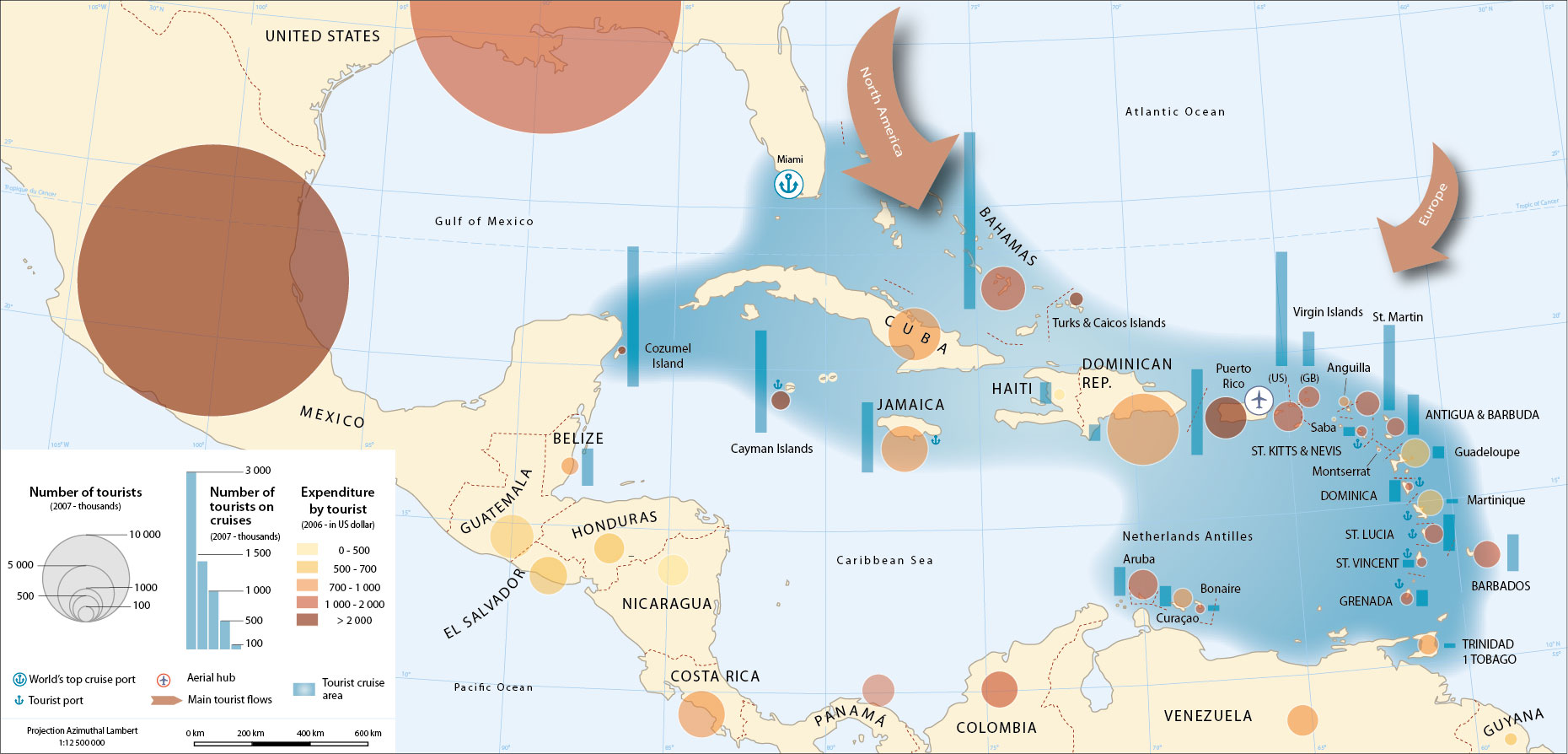
- La croisière aux Antilles françaises en 2017 : stratégies et enjeux FR ES
- Le tourisme de croisière - 2018 FR ES
- Tourism (2006-2007)
- Tourism (2010-2011)
- Tourisme (1993) FR
Along the mainland coast, wherever tourism has been developed, the numbers involved have proved much greater than on the islands. Nevertheless, for several Caribbean islands, tourism represents the most important economic activity. This is particularly the case in the Bahamas which constitutes the premier tourist pole of the Caribbean, contributing 40% of the GDP, growing annually by more than 5% at the end of the 1990s. Tourism is omnipresent here. In order to appreciate its importance, it is necessary to compare the above percentages to that of its population, just 250 000 inhabitants.
Visitor numbers across the Archipelago of the Greater and Lesser Antilles now exceed 12 million tourists per annum and 19.2 million on cruises. The Greater Caribbean has today become the world's premier centre for sea cruises. Most of the clientele comes from the United States and a smaller proportion from Europe. The four topmost destinations are in the north Caribbean: the Bahamas receive nearly 4.5 million tourists and cruise visitors, the Dominican Republic around 4.2 million, Jamaica and Puerto Rico 2.8 million. Following behind are the US Virgin Islands, Cuba, Cancun, the Caymans and Saint Martin, but visitor flows are less important (totalling around 2 million). Investment in tourism is multiplying; its importance within local economies has also led to a degree of social and economic fragility. So in Saint Kitts and Nevis, whose livelihood depends on tourism and sugar cane, the closure of a major tourist facility in 2000 deprived the country of half its hotel tax receipts.
Tourism in the Caribbean is overwhelmingly resort based, but sea cruises, which have long existed, are experiencing (as elsewhere in the world) a revival. The Basin lends itself well to such activity with the possibility of stopovers everyday on different islands.
top
|
  |














